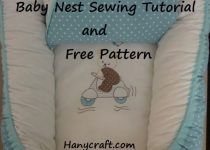Jute Properties, What is Jute?
Jute’s, also called burlap, raw material is the jute plant. It is a woody annual plant that can grow up to 4 meters in tropical climates. Its production requires heavy rainfall. It is the most producing vegetable fiber in the world after cotton.
Burlap’s homeland is the peninsula of India. Its usage spread to the world in 1970s thanks to exporting from India to the west. Today, India and Bangladesh produce ninety percent of It. Although there are many varieties of jute plants, Corchorus capstilaris L. species is using for.
Becuse of cheap production, jute is favored. Its popularity has been lost because of the availability of high-quality synthetic products in recent years . However, because of the negative effects of the synthetic products on the environment and health, the jute became again popular.
How Does Jute Grow?
Its planting time is March and April and harvesting time is after 4-5 months. Next step is keeping the picked plants in water for a long time and wait for fermentation. At the end of the soaking, the rotting plants are peeled by hand. Then, removed fibers from the shell is spreading and letting to dry. They turn to light yellow to light brown as they dry. After that, process continues at the factory. Yarns of different thicknesses are produced according to the purpose.

Features
Jute has very high moisture absorption. To explain, It absorbs up to 34% moisture in a 100% humid environment. It is durable but has little flexibility. Also, its strength is less than flax or hemp. It is an environmentally friendly product. When burlap rots, it is completely mixed with the soil. The disadvantage is the fiber decay due to moisture and heat. Brightness of jute yarn shows its quality.
Mixture of high quality jute, natural and artificial fibers are using for making dress and curtain fabrics. Most of the burlap in the world are using for the production of sacks, cover fabrics, rope and twine. Due to the difficulty in bleaching, these fibers’ usage is limited to packaging materials and carpets.
Jute fabric (burlap) are also produced by mixing wool, polyester and viscose . Newly blends with cotton have also being produced. This is important for the use of it in textile.
What is made of Jute (Burlap) Fabric and Yarn?
Burlap and jute yarn which are widely used in hobby works create a kind and elegant appearance. Their natural appearance also attracts attention. It is not using in the production of clothing. But in many parts of the house it is possible to see as ornaments for decorative purposes.
Burlap is using for making engagement cushion, bag, handkerchief, decor products, tablecloths, curtains, packaging, bottle decorations, door decorations, mat making, gift wrapping. With its natural appearance, it will suit every environment as a decorative product. In fact, your limit is your imagination. You can use it anywhere.
You can make even cross-stitch to some of them . The combination of cross-stitch and jute (Burlap) is so elegant.
How to Wash Jute?
Jute fibers and woven jute textures most restricting components are that they are significantly debilitated by water. That is the reason you will regularly discover jute joined with different fibers like cotton or polyester to include quality during cleaning. Dry cleaning would be good for any organized burlap piece of clothing or home adornment. In the event that there are stains, set aside effort to call attention to them and recognize them to your expert cleaner to get the best outcomes.
In the event that you should wash jute things, hand wash independently in cool water utilizing a mellow cleanser. Jute textures or burlap can be weak so it must be dealt with delicately. Try not to wring or contort the wet texture. You should wash burlap alone on the grounds that it can shed filaments. These are hard to expel from different textures, particularly terry material or any rested texture.











